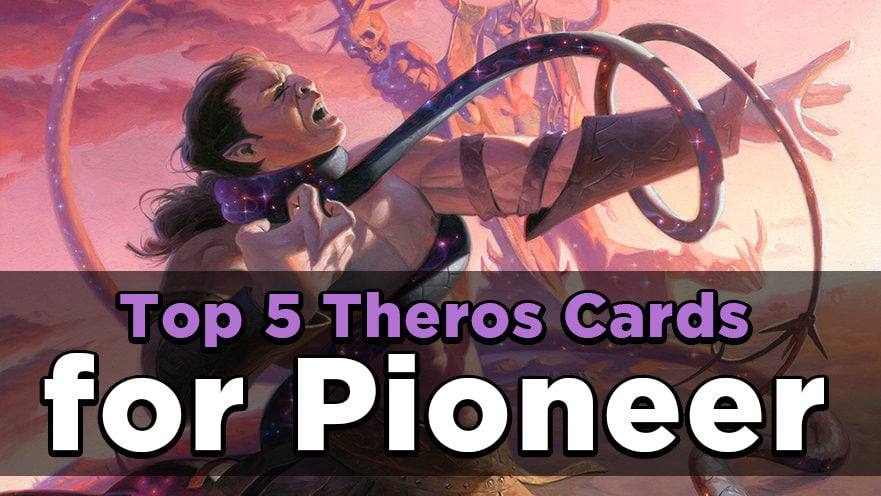Theros Beyond Death is just around the corner, and all the new cards have been revealed. I’m excited to play with these cards in every format, but I’m most interested in the set’s impact on Pioneer.
Pioneer is currently as healthy as it’s ever been: every color is represented well, and there are multiple archetypes within almost every color combination. There’s a good chance you’ll be able to find a strategy you like and do well with it with enough practice.
That said, the format is due for a shake-up with the release of Theros Beyond Death. Here are the cards that will make the biggest impact.
Honorable Mention: Underworld Breach
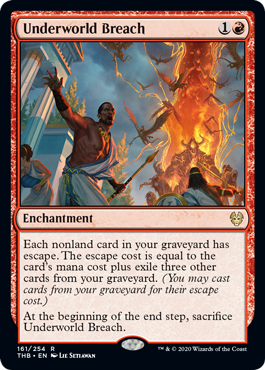
Let’s clear the air right now: I do think this card is busted in half. What I’m not sure about is if Pioneer is the format where we can do the most busted things. There’s bound to be something in the format’s card pool that enables it, but I simply don’t know what a deck that maximizes this card looks like. We already have ways to enable escape with Satyr Wayfinder, Grisly Salvage, and the like. But what’s the payoff? Do we just jam Underworld Breach in Soulflayer and use it to escape the namesake card? Can we put it in Lotus Field Combo and use it like Modern Storm uses Past in Flames? Time will tell what will happen, but Underworld Breach is certainly a card to watch.
5. Drag to the Underworld
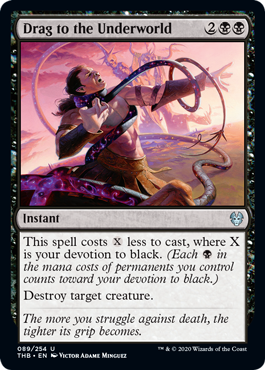
This card will almost certainly see more play than any other card in Theros Beyond Death. It’s elegant and straightforward, and it makes Mono-Black’s deck-building decisions a heck of a lot easier. Previously, Mono-Black had to choose between Grasp of Darkness, Fatal Push, and Hero’s Downfall. Drag to the Underworld isn’t strictly better than these other cards — in fact, it’s much worse when you’re behind, and its inability to hit Planeswalkers is a big deal, too. I expect Mono-Black players to try playing 3-4 copies of this card in their decks once Theros releases, then replace some of those slots with other removal spells as the weeks go on. However, make no mistake: if you’re playing a creature deck in Pioneer, make sure your payoffs have an immediate impact, or you just might lose to this spell.
4. Phoenix of Ash
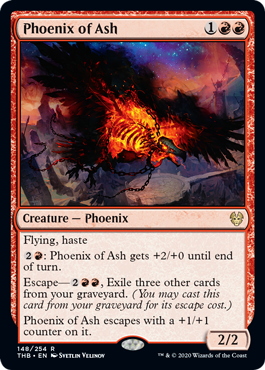
This one doesn’t seem as obvious, but Phoenix of Ash does three important things in Pioneer. It attacks quickly and evasively, it provides a mana sink, and it’s resilient. A Wind Drake is not usually very exciting, but I think the Red Midrange decks will like this card, especially right now, when some creature spots are in flux. Almost all the red decks in Pioneer would love a way to utilize their mana on awkward turns, and Phoenix of Ash fills that role perfectly. By no means is this a format staple, but a threat this pesky — which also feeds off your deck’s most underutilized resources — will make Big Red decks harder to hate out.
3. Storm’s Wrath
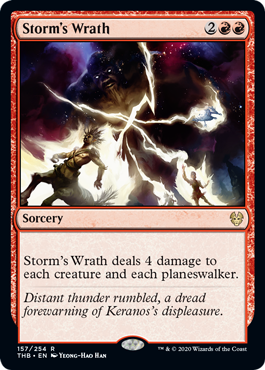
This is the perfect sideboard card against any aggressive creature deck. The majority of aggro decks in Pioneer are also backed by Planeswalkers; being able to get rid of creatures — while also potentially crushing their Sorin, Domri, or Teferi — is a huge pull.
The only creature this doesn’t reliably hit is Lovestruck Beast, but I’m still more than happy to play this against decks running that card. More often than not, you’ll leave Lovestruck Beast stranded, and if you’re in a stable position post-Storm’s Wrath, you’re probably fine taking five damage and reevaluating from there.
This card will be a sideboard staple, likely replacing Mizzium Mortars in decks that need a way to shift to a control route and stabilize early.
2. Woe Strider
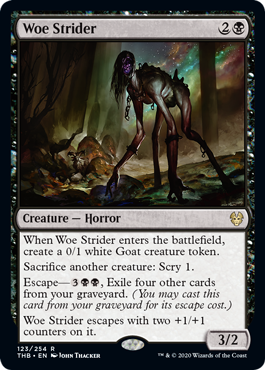
We already have almost all the pieces of an Aristocrats deck in Pioneer: Cruel Celebrant, Cartel Aristocrat, Stitcher’s Supplier, Cauldron Familiar and Witch’s Oven, and even Rally the Ancestors. That makes Woe Strider sweet icing on an already potent cake. Plus, its sacrifice ability doesn’t have any extra costs, which is kind of unbelievable.
But there’s a big question you have to ask yourself when playing a deck like this: What’s your plan B? You’re very susceptible to graveyard hate, and I expect to see a lot more hate in sideboards once this set is released. One option is Gideon, Ally of Zendikar, which both bolsters your small threats and provides an engine for Woe Strider. Elspeth, Sun’s Nemesis is also a card worth playing if you need a more resilient threat.
Woe Strider asks less of you than other cards on this list, as it already fits so well with decks that want an effect like this. Expect this to see play in a lot of decks that are on the fringes of the format.
1. Heliod, Sun-Crowned
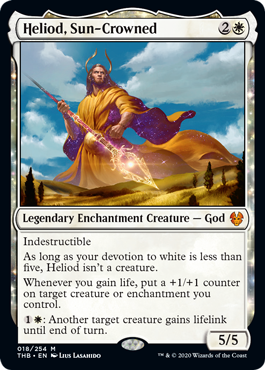
This card scares me so much.
Ever since Heliod was previewed, everyone has been talking about using it to go infinite with Walking Ballista. (You can deal infinite damage with Heliod and Chamber Sentry, too.) The biggest question is what shell goes around this potentially format-defining combo. Some players have suggested Collected Company, but that doesn’t work with Walking Ballista. If we can find the best build for this combo, then we may have a tier one deck in the making.
My first thought was simply putting it in an aggressive white deck, but that plan feels too forced, and likely means Heliod does nothing most of the time without Walking Ballista. Another idea was Kethis Combo, and the more I thought about it, the more it makes sense there. Both cards are Historic, meaning cards like Board the Weatherlight and Diligent Excavator work very nicely with them. Teshar, Ancestor’s Apostle can return a Heliod in the graveyard to the battlefield when you cast a Ballista, making the deck more resilient to counterspells. Hope of Ghirapur also provides protection for your combo, and Emry, Lurker of the Loch is yet another way to get the combo started from your graveyard. Everything just fits.
The only question remaining is: Which cards do you cut? You don’t necessarily need four Heliods and four Ballistas, but the Kethis Combo lists are already pretty tight. Is it worth losing a bit of combo protection by cutting Teferi, Time Raveler? Maybe shaving a few copies of Lazav, the Multifarious is the way to go?
However things go, it’s clear that Heliod, Sun-Crowned is the frontrunner for Theros card with the most potential in Pioneer. Everyone’s eyes will be on the mono-white god, waiting to see how he’ll impact the format. I don’t feel the Walking Ballista combo is oppressive enough to warrant any action, at least to begin with; even if it is, the format should have time to react.
In any case, I’m excited to see where these cards — and many other cards in Theros Beyond Death — end up in Pioneer. As fun as the format is right now, I always welcome a shake-up, and this set has no shortage of impactful cards!

Anthony Lowry is a high level competitor in several games, and Magic is no exception. His newfound passion for deckbuilding has reignited his drive to compete and test his skill against the best.

